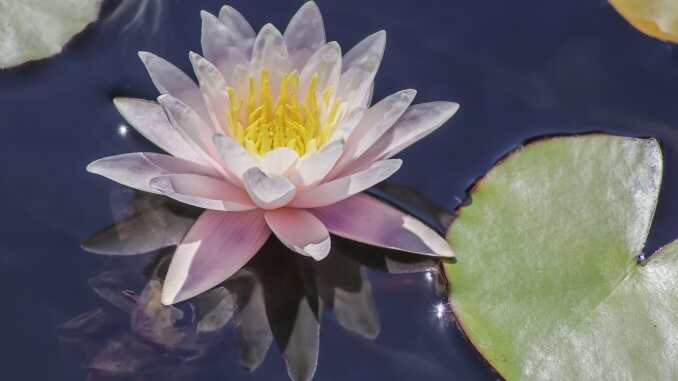
Water Lilies are one of the classic freshwater floral species.
These plants are so popular in part due to their pleasing looks and fragrant scent.
In our article below, we will give you an insight into the wonderful world of Water Lilies.
We will be discussing everything you need to know about these aquatic plants and hopefully share some interesting information which even some of you expert Lily keepers may not know.
TABLE OF CONTENTS
About Water Lilies
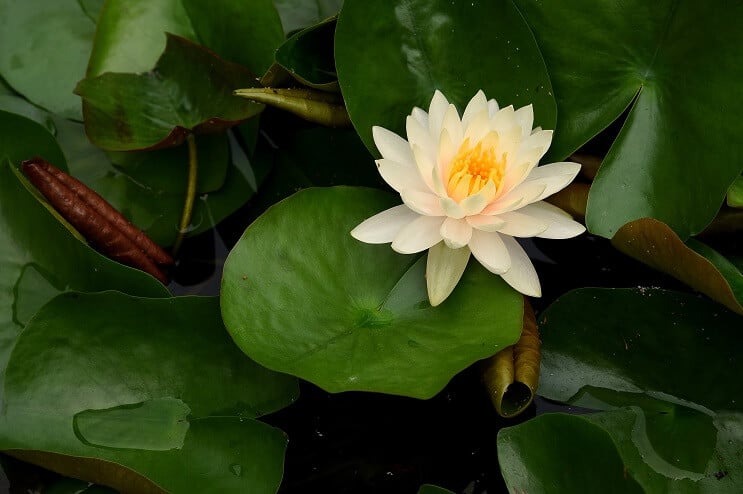
There are around 60 species of Water Lilies which make up the family Nymphaeaceae.
They are found throughout many parts of the world in both temperate and tropical climates and they come in lots of different colors, shapes, and sizes.
All of these factors have made them one of the most popular species of aquatic plants to be kept within both the water gardening and fish keeping.
Within these hobbies, people house these different species within lakes, ponds, and even large aquariums.
They are kept for various reasons but the main aim for most people is to see these plants bloom their beautiful and fragrant flowers.
However, their joy is short-lived, as sadly the flowers only last for around 4 days.
These species of aquatic plants provide both adult and juvenile species of fish with shade from the sun and shelter from predation.
They also provide amphibious species like frogs with a place to rest (which is the classic image that comes to mind when you think about these wonderful plants).
A group of these plants will cost you anywhere from $18-$120.
Appearance
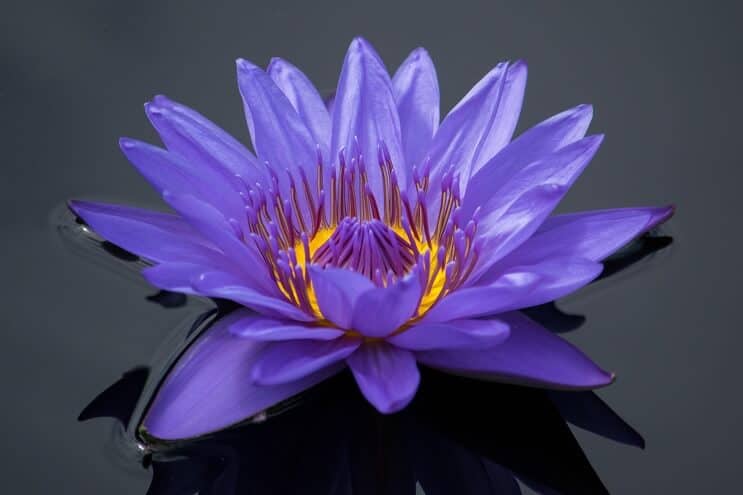
Water Lilies come in lots of different colors, sizes, and shapes. There are many different species that are known to exist, but they are all rooted within the substrate at the bottom of the water body they occupy.
At the top of their stems and at the surface of the water, thin, flat leaves sit afloat. They are usually round with a V-shaped split down the center.
However, Giant Water Lilies have pads that can grow to 9 feet in diameter and have upturned edges.
These pads can vary in color both between individuals and species. Most, however, are green with a dark reddish to purple pigmentation.
From the rhizome, stems can also form which possess a spear-like tip.
Once this tip grows and protrudes from the water, within a day or two it will begin to open up and reveal a beautiful and fragrant flower that can be one of a large number of different colors (once again species dependent).
It is these flowers that make the plant so popular.
Check this Article: Freshwater Aquarium Eel: A-Z Best Types Of Eels
Pink Water Lily
The Pink Water Lily which is also referred to as Pink Darwin Water Lily is scientifically known as Nymphaea darwin or water lily nymphaea. The stems can grow as large as 3 feet tall and can have a spread of nearly 5 feet across.
This plant usually produces stunning pink flower flowers between June and September. The flowers only last for around 4 days before re-submerging themselves.
They are a relatively inexpensive aquatic plant that can be purchased from most aquatic garden centers or online for between $15-30.
Purple Water Lily
Over the past decade, the hybridization of aquatic plants has exploded. This has resulted in new strains of Water Lilies, with the most extravagantly colored ones being a deep and vibrant purple.
A lot of different garden centers or online stores are now producing their own patented hybrids, and the purple ones can set you back as much as $110.
How to Plant a Water Lily
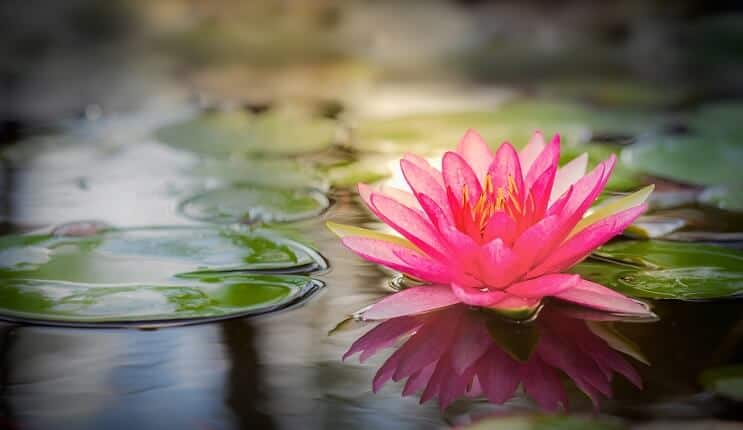
When it comes to planting your Water Lily, there are five things you are going to need. These are a planter, soil, pea gravel, slow-release fertilizer balls and the plant itself.
The size of the planter you use depends on the size of the Lily you have chosen and whether the plant will be placed within an aquarium or a pond.
As for the substrate, you need to use soil that has a low organic matter content and not composting soil as it will pollute your water.
To start, simply fill the planter with soil and compact it until you have around 3 inches of space left.
The next step is to dig a small trench in the soil around half an inch deep, then place the tuber (the root body) of the plant sideways to one side of the planter to allow it to grow across the pot.
Probably the most important thing you need to do in order to have healthy growth is to add a slow-release fertilizer ball. This provides essential nutrients and lots of Water Lilies will not grow without one.
They should be pushed into the soil next to the plant.
After adding the fertilizer and extra soil, you should gently place some more soil over the tuber and then fill the pot to an inch below the rim with pea gravel to prevent the soil from escaping (this also prevents the water to become discolored).
You can now place the plant within the aquarium or pond, it can be planted in the foreground, midground or background.
The ideal location for this plant would be in the midground, in the center of the aquarium because it is a fast-growing plant.
By placing it in the center of the aquarium you provide the plant with room in every direction for the stems and leaves to spread.
Pond Setup and Conditions
As there are so many different species, it is impossible to give one set of parameters that are correct for all the species.
Species that usually dwell in the tropics require a stable water temperature of at least 70-80°F.
Whereas hardy temperate species can be grown throughout the year within indoor ponds and aquariums by maintaining a water temperature of 70°F.
The reason they are a hardy species is due to the fact they are able to survive the winter in these colder climates where water temperatures can drop to 47°F.
Both tropical and temperate species grow best when in full sunlight.
So to grow them indoors artificial lighting which mimics that of the sun (around 6500 Kelvin) will need to be provided for 10-12 hours each day.
Cool white LED lights are perfect for this and are relatively inexpensive and extremely efficient.
When considering what size aquarium you will need to house your Water Lily within, we recommend a minimum 50-gallon aquarium.
The species you choose will ultimately decide the tank size as some grow fairly small whereas others can become huge and should be kept in ponds.
Care and Maintenance
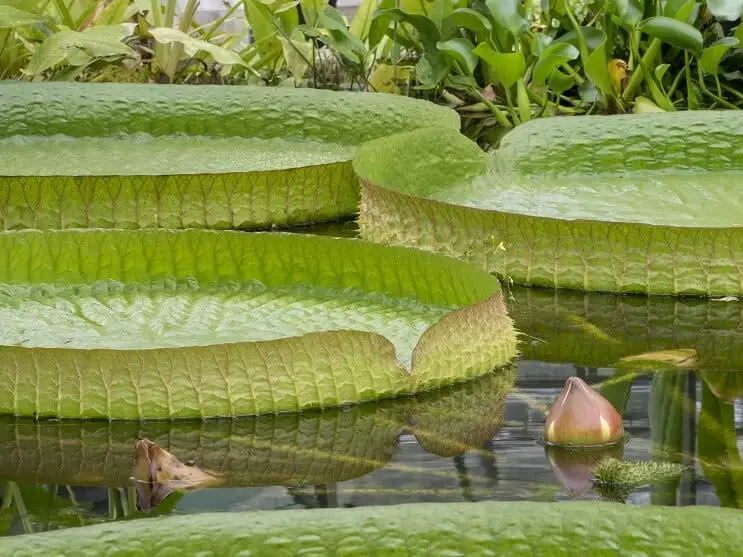
Caring for these plants requires extremely good attention to detail as they can be subjected to pests, diseases, and overcrowding.
These plants often come under attack by pests such as midge larvae which can severely damage their leaves if left uncontrolled.
They can be prevented by adding species such as Mosquito Fish to your aquarium which will consume both adult and larval midges.
Another common pest is the Water Lily Leaf Beetle which feeds on the surface of the leaves. You can remove them by hand as well as covering the aquarium with a hood or mesh lining.
Maintenance
To keep your plant healthy and supplement its growth, you will need to add a fertilizer ball to the potted substrate to provide the beneficial nutrients required for plant growth.
This should be done once every 2 months to ensure maximum growth and disease prevention.
The addition of a carbon dioxide system will also benefit the plants.
These, however, are not essential as Water Lilies are extremely fast growers when kept in the right conditions.
Because of this, they will require a fair amount of maintenance as they can soon overcrowd your aquarium/pond.
When the stems and leaves overcrowd one another, you will notice they start to die off. You want to try and avoid this because when they rot and break down, they release nitrate into the water.
Too much nitrate leads to unwanted algal blooms.
In order to prevent this, regular trimming should be undertaken. Use a sharp pair of scissors and simply cut the stems of the leaves which are yellow.
Try to cut them as close to the base of the plant as possible.
Propagation
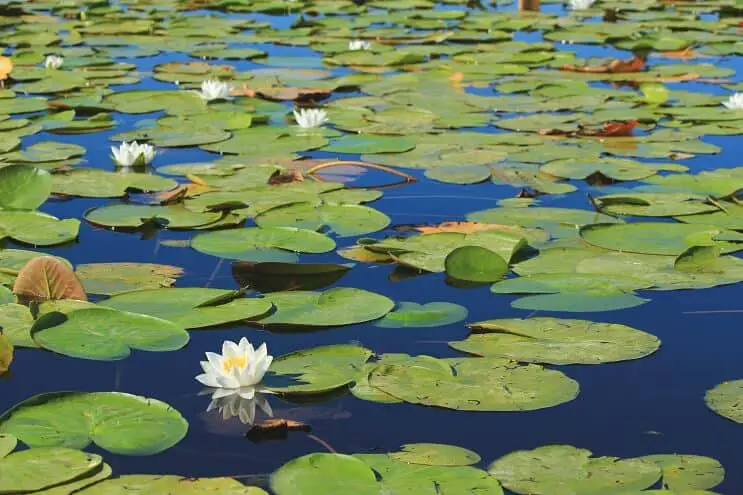
Water Lilies have two methods of reproduction: the production of seeds and also vegetative reproduction.
When the plant blooms, the flower will only last for around 3-4 days. On the first day, the flower produces a sweet and fragrant liquid that attracts insects like bees that are needed for pollination.
Providing these organisms have visited other Water Lily flowers, pollen will wash off of their bodies and fertilize the female reproductive organ (stigma).
The following days, the male reproductive organ (stamen) will produce pollen which is carried by pollinators to fertilize other plants.
After day 3-4, the flower will begin to recede beneath the water and up to 2000 seeds will begin to be produced within the plant over the next couple of weeks.
These seeds are then released into the water and will float on the surface, they are then carried to different locations until they become waterlogged and sink to the substrate where new plants will form.
If you are keeping a Water Lily inside, you can fertilize the flowers yourself by transplanting pollen from one plant to another. This is difficult as you need several individual plants to flower at the same time.
The second reproductive method of this species is propagation via vegetative reproduction.
This is definitely the easier method of propagating your plants as it will naturally occur on its own.
The plant will produce it’s own runners/rhizomes which are essentially clones of their parent plant and can be detached from the parent in a process known as rhizome division.
They are often referred to as daughter plants and they can be separated from the roots of the parent and transplanted into their own pots with a substrate and slow-release fertilizers to aid growth.
Buyer’s Guide
Before going down to your local garden center, make sure you research individual species to find out how large they grow and the conditions they need to be kept in.
Don’t just buy the first plant you see.
Carefully inspect the plants before buying them.
Look out for any pests which have burrowed into the leaves of the plant and eaten long ridges out of them.
Another thing to keep an eye out for is crown rot.
The visual signs to look out for are yellow curling leaves which can be pulled off from the main plant body with ease. It is very important that you never buy a plant which you believe to have crown rot.
Spend your money wisely on the correct and healthy plant for your aquarium.
This is extremely important, especially when you consider that these plants can cost anywhere from $18-120 depending on the species.
Pond Mates and Compatibility
Because these freshwater plants can be either temperate or tropical, there are lots of living organisms that they can be kept with.
You can keep them with other aquatic plants such as:
- American Water
- Java Fern
- American Eelgrass
Hornwort, on the other hand, should be avoided entirely as it excretes a chemical that stunts the growth of a Water Lily.
Keeping aquatic plants has a variety of benefits for your aquarium, including the production of dissolvectrd oxygen.
In addition to plants, there are lots of fish that make superb tank mates.
One such species is the Otocinclus Catfish which can help these plants as they are algae-eating species that eat algae off of every surface in the aquarium (including the leaves and stems of these plants).
Bristlenose Plecostomus, along with Siamese Algae Eaters will also do this same task. Live bearing species like Guppies, Platys and Mollies are also perfect species to be kept in the same aquarium as Water Lilies.
You should avoid predominantly vegetarian species like larger Cichlids and Silver Dollars – they will eat the plant.
Goldfish species should also be avoided as they have a reputation for uprooting any and all aquatic plants in their path.
However, you can combat this by purchasing specialized netting which surrounds the leave and stem of the plant.
Whilst these nets take away from the visual beauty of the plant, they are effective.
If you are keeping Lilies in a Koi pond, nets are a must.
Are Water Lilies Suitable For Your Pond?
These wonderful aquatic plants are the highlight of most collections with their stunning flowers which come in lots of different colors.
There are dozens of water lily types you can choose from and if you don’t have a large aquarium or pond then you should stick to the smaller species.
When it comes to picking good companions to keep in your aquarium along with your Water Lilies, there are a lot of great options to choose from. Just avoid anything with an appetite for plants.
Have you kept these magnificent aquatic plants before? Let us know in the comments section below…


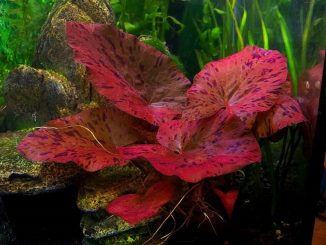
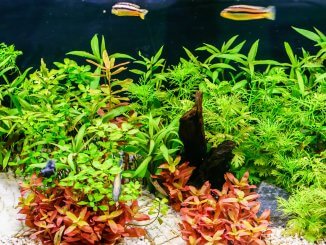
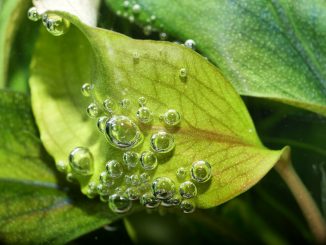
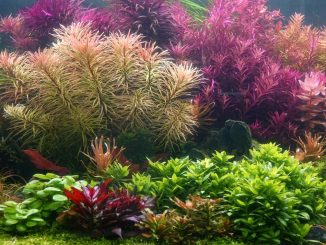
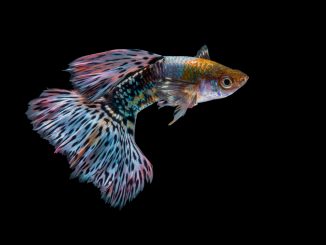
Something is eating the water lily leaves, I see no bugs…is there something I can put on them ? I just have them growing in a container tub…I am wondering if theres some product that I can add to the water or on them.
I believe there is a 3rd method which my purple ones are doing. From the center of the floating leaves a plant develops and as it grows the leaf rots and then new plant is now free floating and floats someplace the roots can attach.
I was told I could grow the miniature water lilies that I bought in a fish bowl with just water. It has grown stems and leaves, but has yet to bloom. should I just give up on them, or get a fertilizer pill into the water?